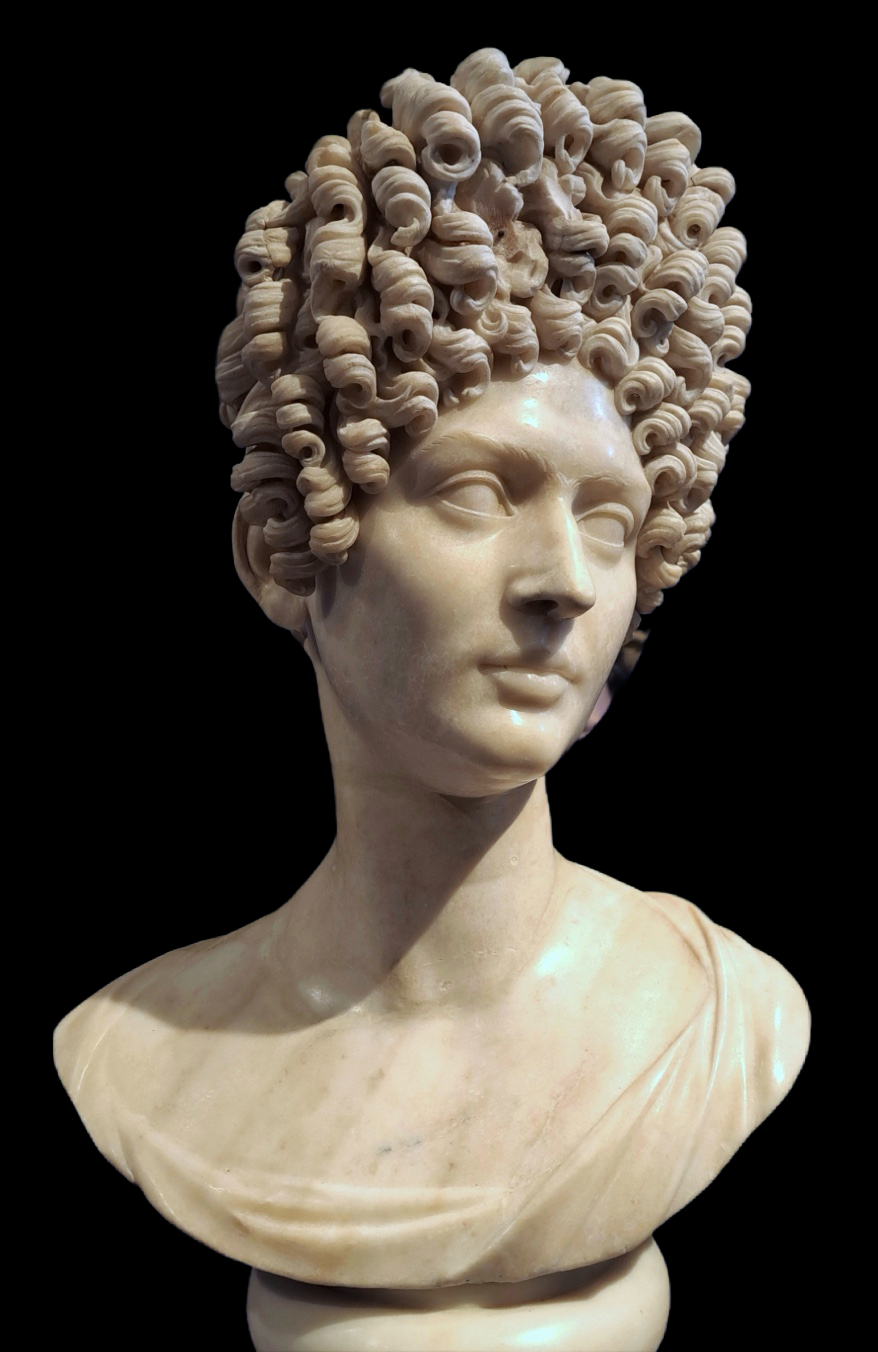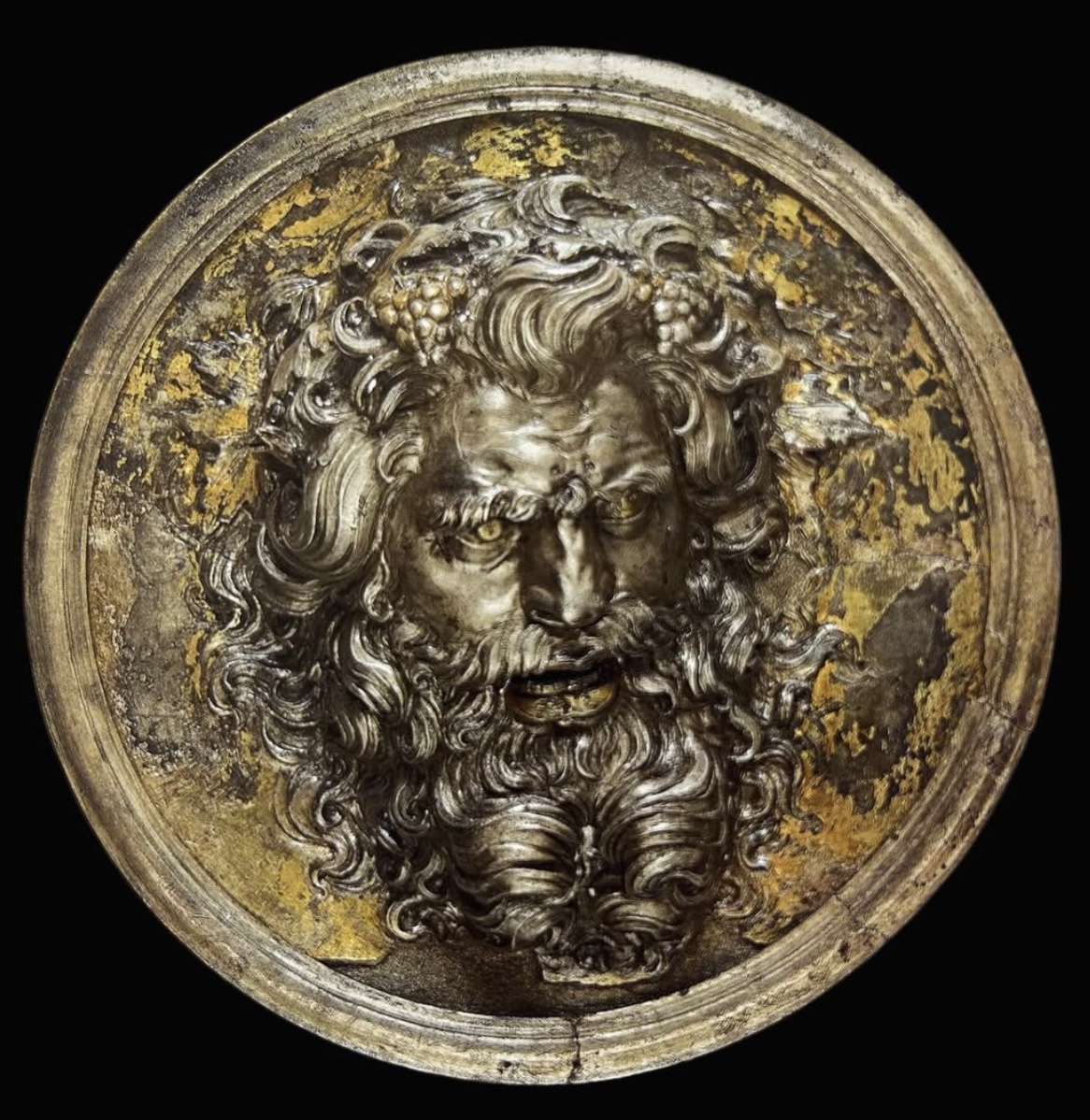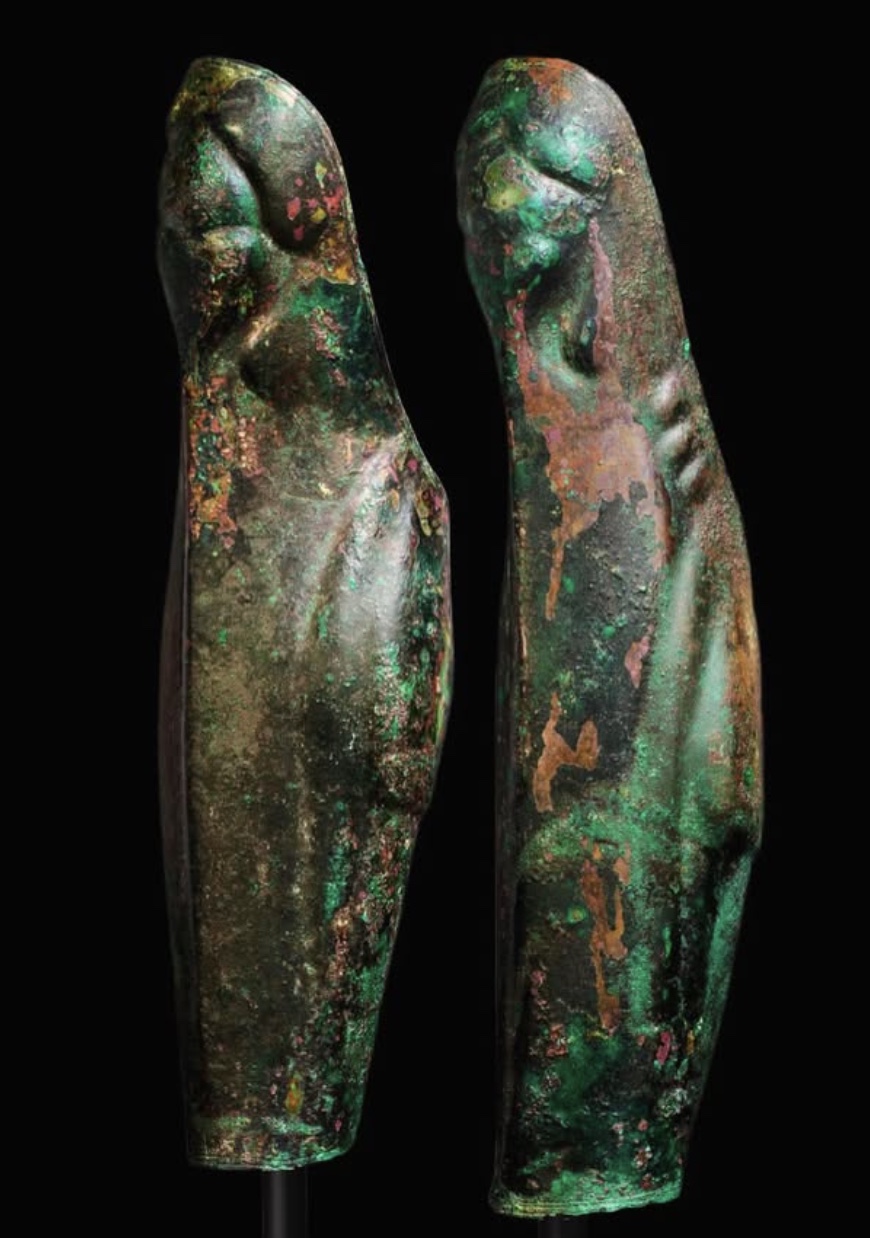Sprightly and powerful in profile, this dancer is a joy! All buoyant curves and sinuous lines, for a relatively small bronze (18.7 cm tall) there is a lot going on here, and a few unanswered questions…
If something doesn’t seem quite ‘classical’ about her at first glance, that’s because she was produced in Etruria (modern Tuscany), where native artists were influenced by Greek artists but not slavishly so – and this is Etruscan art at its most exuberant.
Although she could be classified as a sculpture in the round, the dancer has a curiously two-dimensional aspect: viewed straight on she all but disappears. Perhaps inspired by the profile figures on imported Athenian vases, Etruscan artists were especially adept at rendering their subjects in striking silhouette – the tomb paintings at Tarquinia and Cerveteri bear this out. Jolly figures, flourishes of drapery, and a rollicking good time.
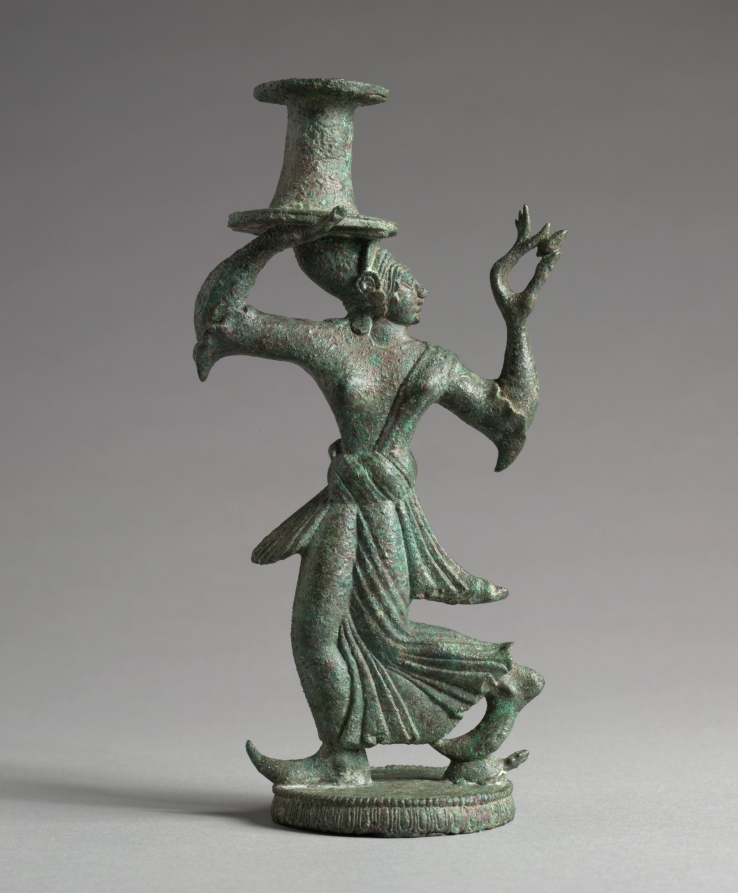
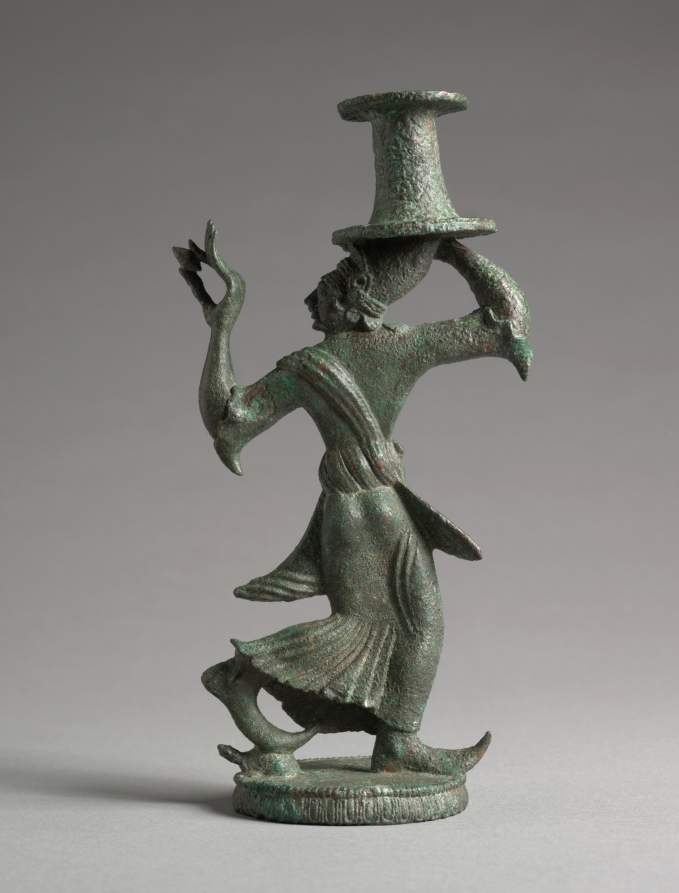
Solid cast from her pointy boots to elegantly elongated, tapering fingers, she was probably once part of a thymiaterion (an elaborate sort of incense burner) or candelabrum – and the spool-shaped object held like a tray above her head would have supported the longer branch of this utilitarian object. What precisely that is pinched between the thumb is anyone’s guess. Blossom? Bud? Fig? Date? Egg?
Perhaps the most persistent iconographical mystery, though, is the little tortoise she treads on with her rear foot. Sometimes interpreted as an indication of a wild woodland environment (in association with Hermes), it could mean she is a maenad or nymph. It could also be read as an obscure attribute of Aphrodite, perhaps then linking our dancer with that goddess.

